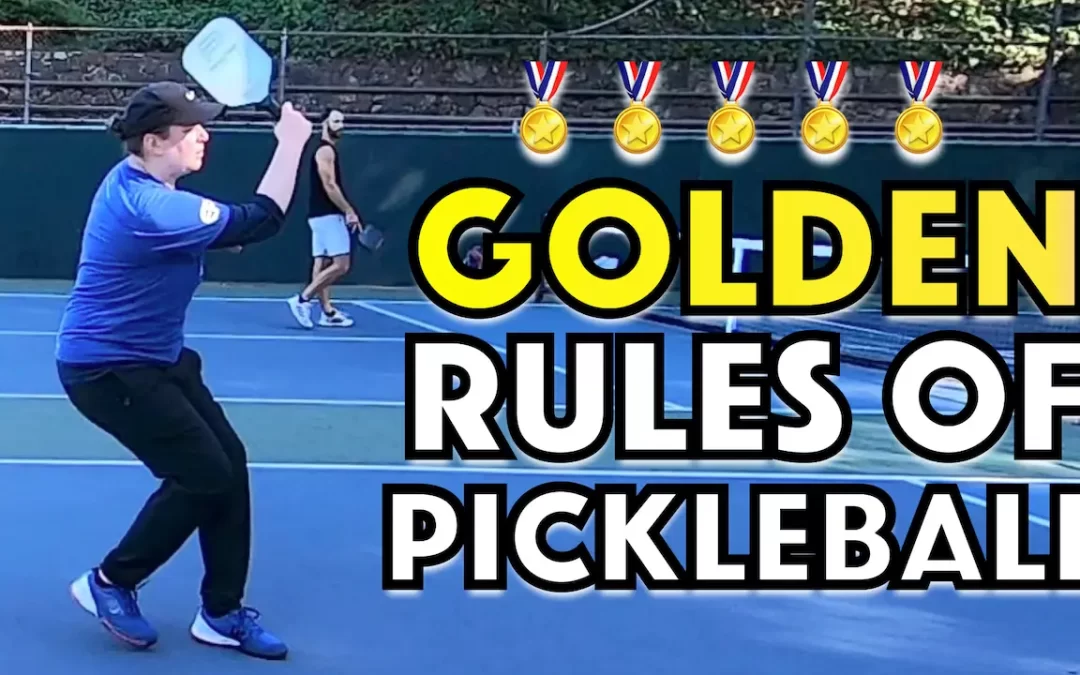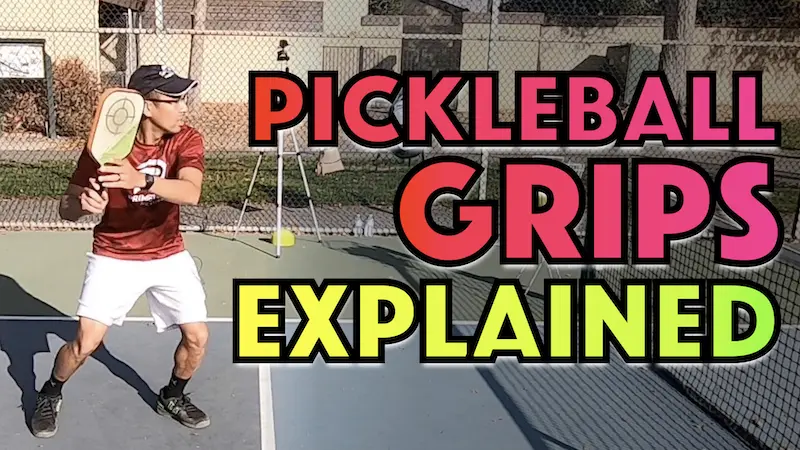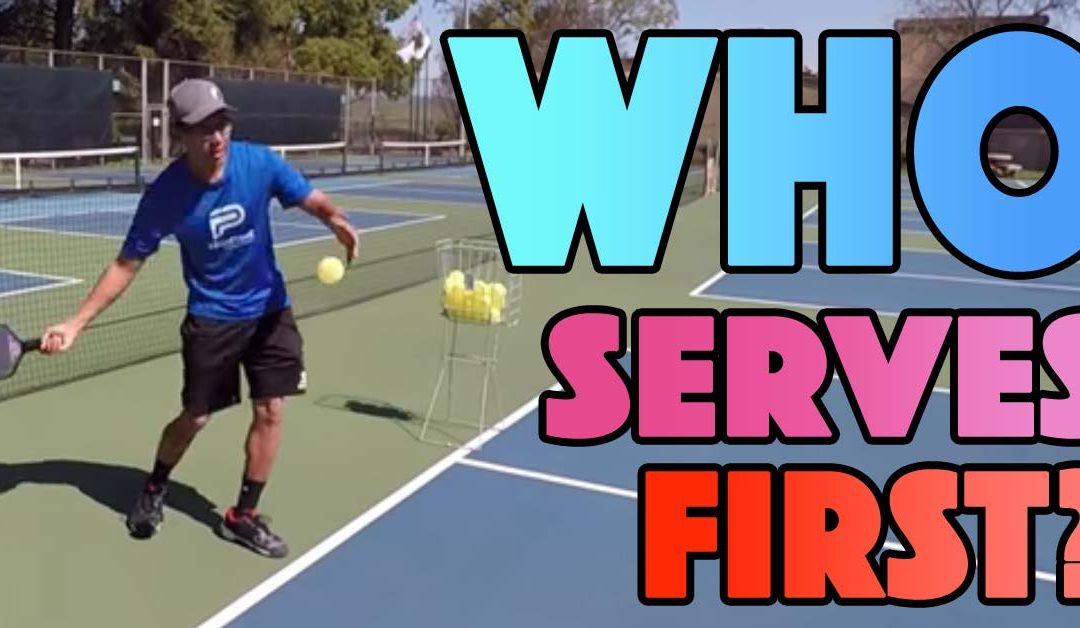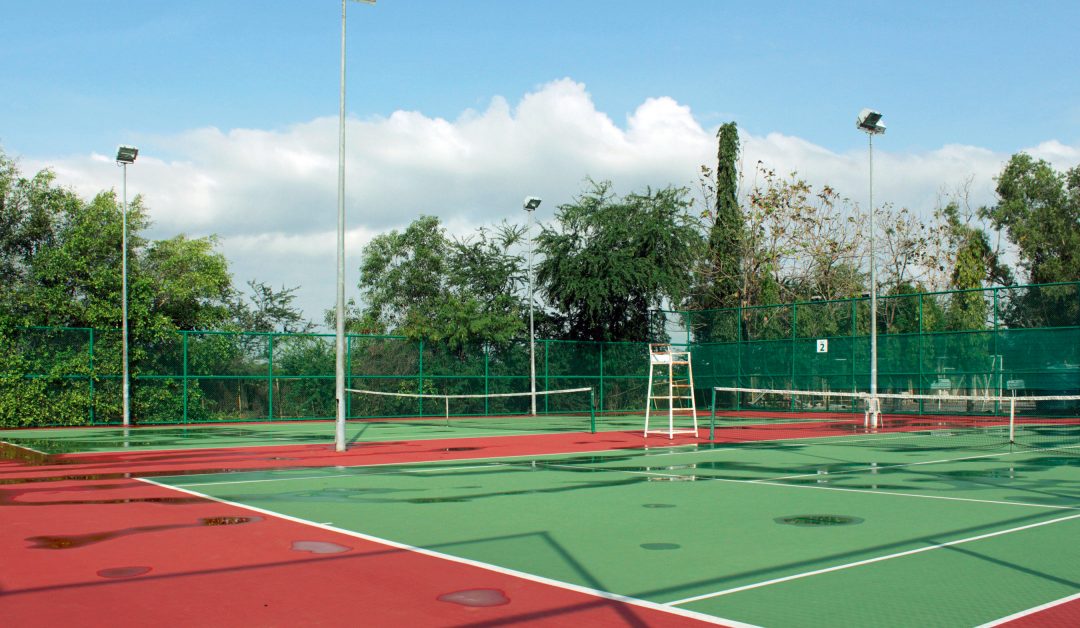Want to be able to take charge of the court? If you hope to win regularly on the pickleball court then this is definitely something you’ll want to learn. The best way to do that is to control the net while at the same time keeping your opponents from advancing to the net.
To do that there’s one key skill that you need to develop. We’ll cover what that is and how to develop it.
Before we dive in, you can easily adapt what we’re about to cover using a wall at home or with a partner in your driveway, backyard or a low traffic street.
A court is not necessarily needed, you just have to be sure to hit the ball firmly and a few feet over an imaginary net as the goal is to get it deep.
Specifically, we’re going to be working on developing your volleys.
Volleys are not just for up at the non-volley zone line, they’re also for use in the transition zone when you’re making your way up to the net from the baseline.
The better you are at taking the ball out of the air, both up in the court and back in the court, the more you’re going to hold your ground on defense and be an offensive force.
Strong Volley Drill You Can Do Anywhere
Grab a partner, both of you will start up at the non-volley zone line or at about a 14 foot distance from each other if you’re not on the court.
Hit controlled volleys to each other’s torso, so right around the chest. Anything at belly button level or above will work.
What To Focus On When Volleying
You’re going to try to hit nice solid volleys. A key to a good volley form is that you’re going to push through the ball rather than whack at it.
You want to have a stable paddle face throughout your motion. What a lot of people do when making errors in volleying is that they are moving their paddle face a lot. They’ll either turn it down or they’re moving their wrist in some way.
You want to have a stable wrist while pushing through the ball. Your swing will be mostly from the shoulder.
When you’re practicing you’ll probably be hitting mainly backhands. In pickleball, many shots will be coming directly at your body and you’re going to want to take those with a backhand because you can naturally cover your body more easily with a backhand than a forehand.
When you’re at the net you won’t have to swing very much. You shouldn’t be taking a big backswing and you should not swing through too hard because you’ll be so close to your drilling partner. This is a cooperative exercise, not a competitive one.
Since the ball will be coming at you with some speed all you have to do is just push the ball a bit to send it back and it should still have plenty of speed on it if you’re hitting efficient and strong volleys.
Volley Drill Progression – One Player Moves Back
At this point your drilling partner is going to stay at the non-volley zone line and you’re going to take a step back and stay about two to three feet from the non-volley zone line.
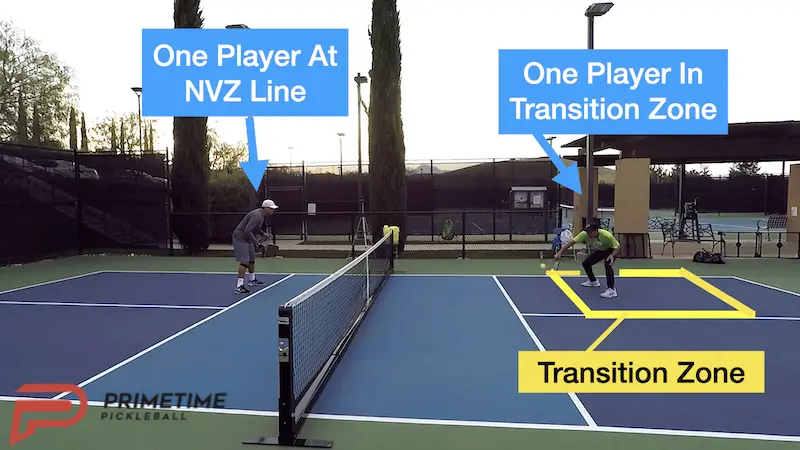
Disclaimer, this drill is specifically for skill development, NOT strategic advice. Your drilling partner is “acting” as a ball machine while still getting a workout because they’re having to demonstrate excellent control. Imagine they are at the baseline while doing this drill and hit through them, not at their feet.
As both of you are hitting the ball you will aim the ball between the waist and torso area of your opponent.
In a real game, as you’re further back from the line, you’re not really going to want to hit it up high because your opponent is going to attack you and hit it at your feet. But again, this is skills training, you’re going to try get get the ball back to your opponent so you can continue with the drill.
And since you’re practicing hitting firm, driving volleys, you want to send it as if you’re hitting it deep in the court.
As you get further from the net, or the further from the net your target is, the more backswing you will have because you will need more power. Also, your follow-through is going to be a little longer. Only swing as much as you need and no more. Efficiency is key and still try to use as much of your body as you can rather than a big swing. Your paddle and your wrist should still stay stable.
Once you get comfortable from a range a few feet back from the NVZ line, take a few more steps back. At this point you’ll be in the transition zone while your drilling partner is still up at the non-volley zone line. Once again, hit volleys back and forth the same way we outlined above.
The added distance makes things a little more difficult and that’s the point. You’re progressing the drill and improving your volleys as you go.
This drill will work on your control. You’re aiming at the same spot every time and so is your practice partner.
While practicing, when you are the further back player, if the ball heads into the net, you either have to push it a little bit further or you have to open up your paddle face a bit more.
Now you can switch with your partner. You move back up to the NVZ line and they take a few steps back from the line. They will work from there for a while as you did, and then they will take a few more steps back and work the drill from there for a while as well, same as you did.
Volley Drill Progression – Both Players Moves Back
After you’ve run through things where one player is back and the other is up, you can then progress to being one big step back from the non-volley zone line and use controlled volleys as described previously in this formation.
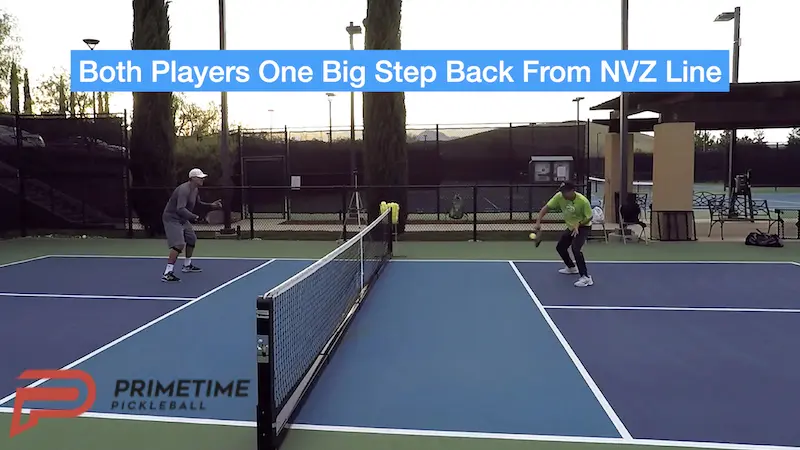
Remember that both you and your drilling partner want to send the volley so that it is reaching your partner at approximately torso level.
After practicing there for a bit, both of you will take one large step back to get you about 6 to 10 feet from the non-volley zone line and you will keep practicing in the same way as described.
You will both be pretty far from each other in this last formation (both in the middle of the transition area). This will simulate a situation/distance where you would be up at the non-volley zone line and your opponent would be way back at their baseline. But, thanks to the simulated distance, you can both work on your volleys at once.
When you’re up at the non-volley zone, you really want to pin your opponent back at the baseline by keeping those volleys deep.
3 Key Volley Technique Tips
Remember the further back you are there’s three things you need to keep in mind.
Limit Your Backswing
How far you take your swing back is going to be a little bit more pronounced the further back you are, and your follow-through is going to be a bit more pronounced also. You’re going to have to push that ball quite a distance but try to be as efficient as you can with your swing. We tend to see too much arm and not enough body on volleys so don’t over do it.
Be Mindful Of Your Grip Pressure
Along with that your grip pressure on your paddle will have to tighten up the further you get from the non-volley zone line. The closer you are the non-volley zone line the looser your grip will be though it will still be on the firmer side as compared to if you were hitting a dink.
Contact In Front
Lastly, and as always, be sure to contact the ball out in front of your body and keep your eyes on the ball through contact. This is true on every shot and is always worth a reminder. Volleys are not different in this regard.
Final Thoughts
We hope these tips help with your volleying. These tips should give you some nice, stable volleys as well as develop wrist, forearm and shoulder strength for better volleys from all areas of the court.
Strong & well controlled volleys from any distance from the net are a key differentiating skill between low level and high level players.
So go out there and try these drills in all the formations with a friend. One great benefit of this drill is that you can do it anywhere because the ball doesn’t need to bounce. You can do it on grass, on sand etc… as long as you have a little space and stable footing.
If you enjoyed the tips we shared here to improve your pickleball game, you’ll want to check out our popular mini course covering the 3 keys to a killer 3rd shot drop, click here to learn these secrets.


